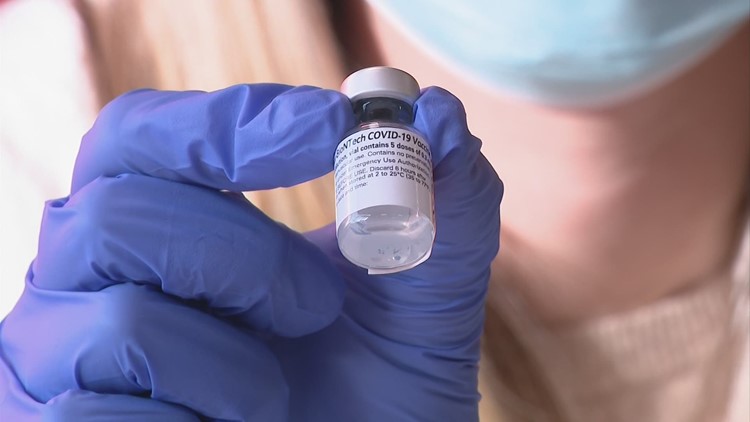Teachers and other school employees, people older than 65, and individuals with severe medical disorders will be included in the second phase of coronavirus vaccine distribution in the state, to start in about two weeks, Ohio Gov. Mike DeWine said Tuesday.
About 2.2 million people are in this second group, and the state expects about 100,000 vaccines for the first week of what's known as Phase 1B, with the amount to be ramped up.
The governor said the goals of the first and second phases of the vaccine remain the same: to save lives and protect the most vulnerable, to protect health care workers, and to allow children to return to school by March 1.
Lt. Gov. Jon Husted added that by providing the vaccine to people older than 65, nursing home residents and those with congenital medical issues, “Ohio has chosen to prioritize the populations that are most likely to die without it.”
Vaccines will have been administered at four of every five nursing homes by the end of the week, DeWine said, while noting he remains concerned only about 40% of nursing home workers are opting for the shot.
Concern about vaccine side effects, the vaccine still being new, belief the risk of COVID-19 has been exaggerated, and a general mistrust of vaccinations are among reasons workers are citing, said Ursel McElroy, the director of Ohio's Department of Aging.
“We know that people are hesitant, but we're hoping that their hesitancy is temporary and we can replace it with confidence,” McElroy said.
The health commissioner in Erie County offered vaccines to 80 police officers and deputies last week even though they’re not on the state’s priority list because not enough frontline health care workers had signed up to be inoculated. Health Commissioner Peter Schade said he didn’t want to sit on the stockpile and was trying to get the vaccine out as fast as possible to those who want it.
“I felt I was OK doing what I was doing, but I shouldn’t have done it,” he said Tuesday, adding that he’ll stick to the state’s priority list from now on after talking with state health officials this week.
Hospitalizations related to the coronavirus remain high at around 4,400 patients, almost three times the number in November, said Dr. Bruce Vanderoff, the Ohio Health Department's chief medical officer. On Monday, Columbus hospitals had to enact a “citywide emergency patient diversion” to send patients to emergency rooms at hospitals best able to handle them.
The seven-day rolling average of daily new cases in Ohio did not increase over the past two weeks, going from 8,393 new cases per day on Dec. 21 to 7,483 new cases per day on Jan. 4, according to Associated Press analysis of data provided by the COVID Tracking Project.
But Ohio's coronavirus overall case numbers, deaths and hospitalizations are still too high to grant a waiver to the 10 p.m. to 5 a.m. curfew to accommodate football fans who want to go to bars to cheer on the Cleveland Browns and Ohio State in the next week, DeWine said.
The Cleveland Browns' playoff game against Pittsburgh is Sunday and Ohio State plays Alabama Jan. 11 for the national college football championship. Both games will last well past 10 p.m.
“We just can't do it. We cannot add to the problem,” DeWine said.



